For all the economists and consumers who hope high food prices are temporary, here's one reason why they probably won't be: Farm costs are skyrocketing, making permanently higher prices essential for farmers to keep expanding production.
Inflation is biting farmers world-wide. In New Zealand, farm wages are up as much as 20% this year, and the average price of a dairy cow has jumped to more than $1,900 -- almost double last year's average of about $1,000. In Thailand and Indonesia, farmers are complaining about sharp increases in the price of fertilizer and diesel fuel.
In the American Midwest, land prices have jumped, along with the cost of energy and chemicals. The price of diammonium phosphate, a common fertilizer, is about $1,200 a ton in the U.S., up from about $450 a ton a year ago.
"Diesel, fertilizer, insecticide, grass-killing chemicals, they're all going up -- just like a shadow," says Samear Ruengrit, a 57-year-old farmer who grows rice about 45 minutes north of Bangkok. His average costs are now about 50% higher than last season, he says.
Farming costs are climbing for several reasons. Higher fuel prices make it more expensive to run tractors and other equipment, while pricier natural gas -- needed to make some fertilizers -- has also played a role. Equipment prices are rising because of strong demand for farm machinery in China and other developing countries, along with rising costs for raw materials like steel.
Wages are up in some parts of the world because many farms are expanding to meet higher demand, putting pressure on labor supplies, especially in countries like Australia where many workers are already occupied in commodity-based trades like mining.
Cost pressures have intensified over the past six months. Many farm suppliers and equipment dealers held back on price increases in 2006 and 2007, despite their own higher energy and labor costs. Now, after a year or more of strong markets for corn and other crops, those suppliers are deciding farmers can afford to pay more -- and they are passing costs along.
OK -- let's add a bit more depth to some of these points. Also remember -- I'm a city boy; I don't know nothin' 'bout no farmin'."
First, let's look at some charts of raw material prices:
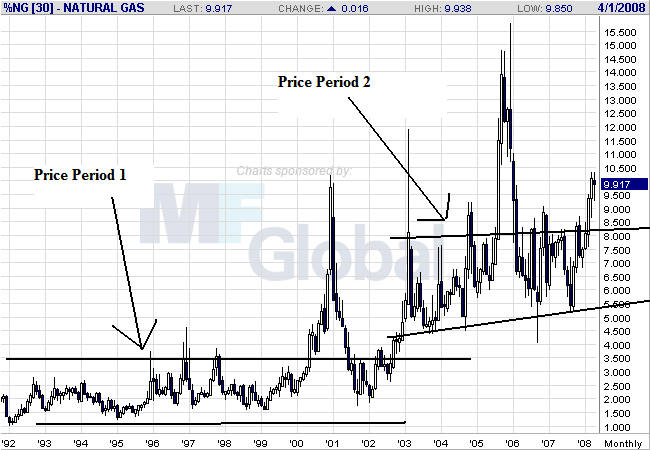
Natural gas prices have two periods with the possibility of a third emerging. The first period occurred in the 1990s with prices fluctuating between 1.5 and 3.5 (roughly). Prices spiked out of this range once in 2001 - 2002. The second period occurred between occurred between 2003 and early 2008 with prices ranging from 5.25/5.50 to 8.25/8.50 or so. Prices have advanced from this range since the start of 2008. However, prices also spiked in 2001 - 2002 and late 2005 and returned to the previously mentioned range, so we'll have to wait and see how this plays out.
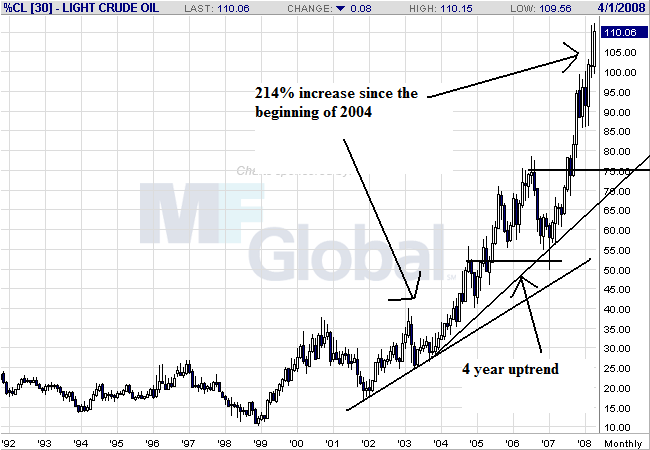
Oil has rallied since the beginning of 2002 and has risen since 214% since the beginning of 2004. It has continually broken through previous resistance to set new highs.
Let's look at some corporate earnings, courtesy of Morningstar.com
Here is Cat's 10-year earning history:

Although Cat has not been the best performing stock:
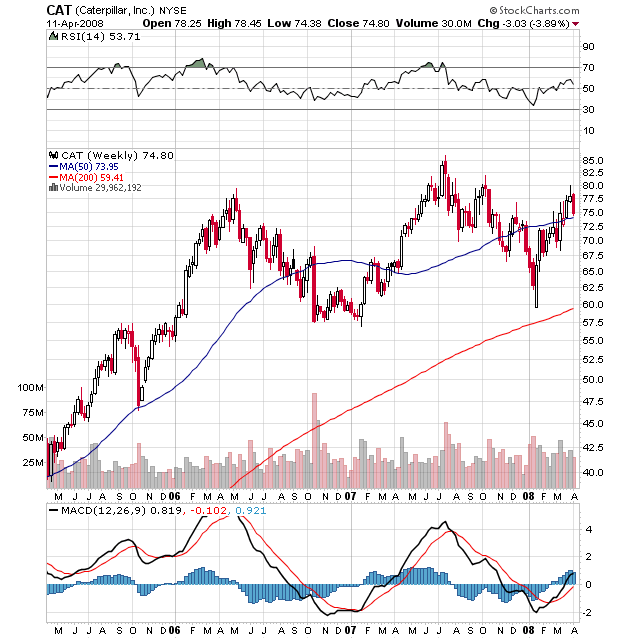
And here is John Deere's earnings:

It's chart is far more impressive:
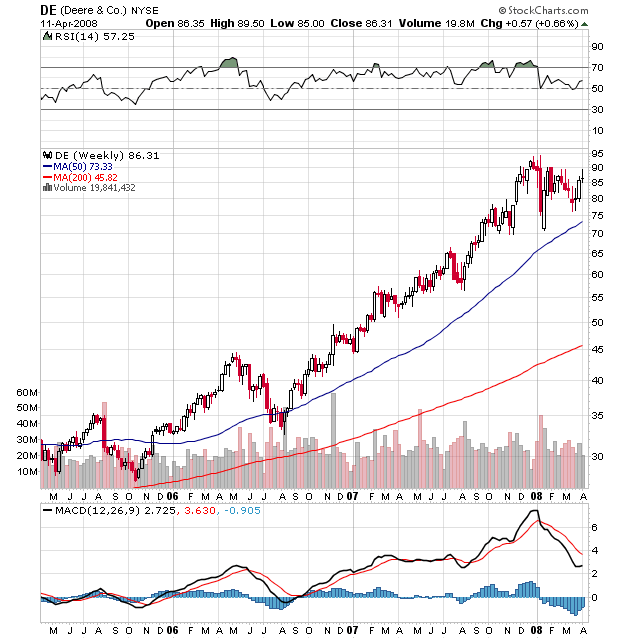
And the fertilizer field is literally on fire right now.
Here is a chart of Mosaic's earnings from Morningstar:

And Mosaics chart -- which is also very impressive:
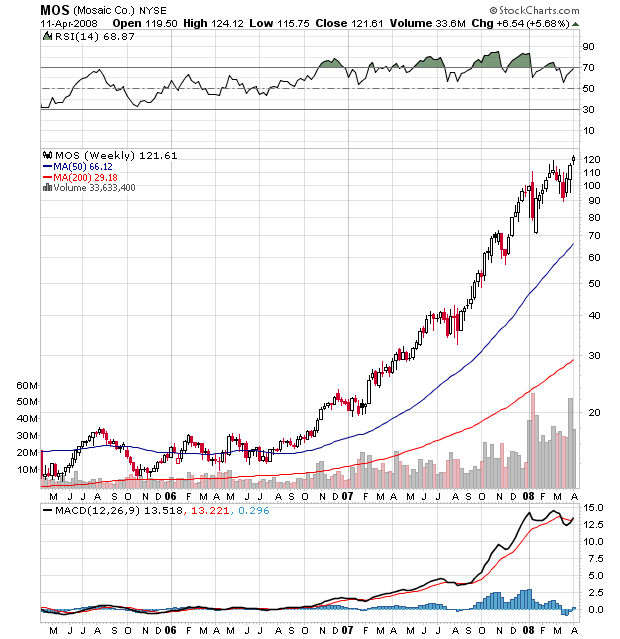
Monsanto's earnings have a solid upward trend:

As does it's chart:
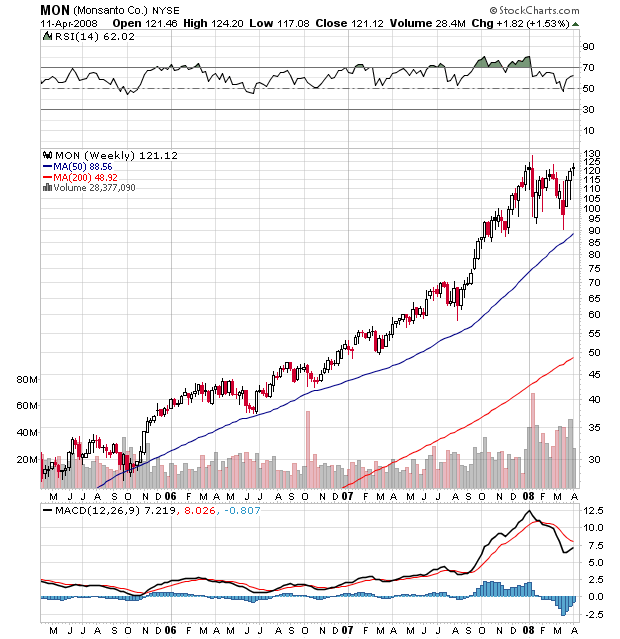
Potash -- which has been a hot company chart wise -- has a good earnings record but they have dipped:

But the chart is on solid:
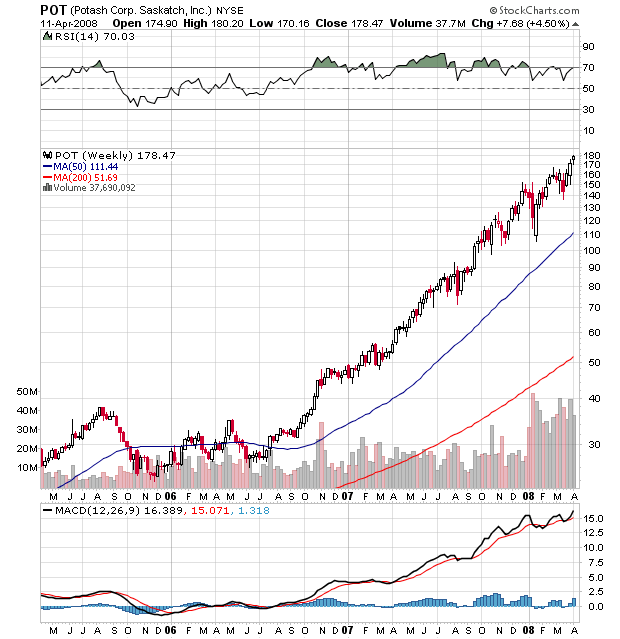
Bottom line -- the companies that supply raw materials, physical capital and other materials to the agricultural industry are doing very well right now.